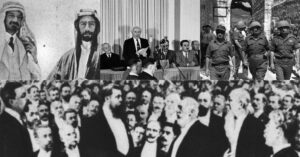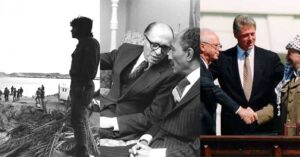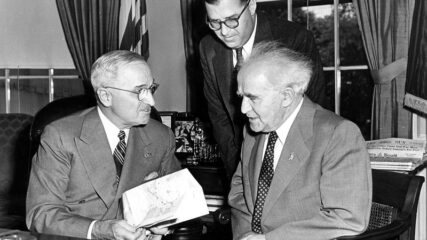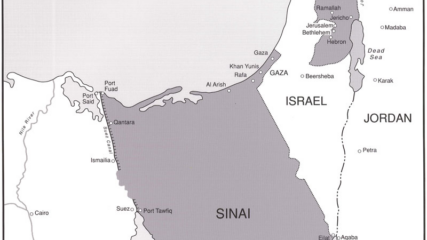Explainers: Hamas and October 7 — Strategy, History, Ideology, Politics (5 videos)
Can a radically hateful ideology ever be neutralized by rationality and logic?
Jews in the Diaspora were and remain a minority. When small numbers immigrated to Palestine to re-establish their national home, they remained a minority. For nearly eight decades as a majority in their own state, Israeli Jews have nonetheless remained a small minority within the Arab and Muslim Middle East. Survival in all three situations has required self-defense, whether through diplomacy or force of arms.
Thousands of years of precarious living forced an evolution in the Jewish fiber, and self-defense was gradually infused with a doctrine of pre-emption. “Do unto others before they do unto you” was catalyzed by Arab riots in Palestine against Jewish settlements, then blasted into Jewish souls by the slaughter of 6 million Jews in Europe from 1939 to 1945.
Five elements formed Israel’s military doctrine: “Never Again” would Jews be without the means to defend themselves; having a small territory and small population required fighting for the state’s defense on the enemy’s territory if at all possible; a citizen army could be called to service quickly in times of crisis; a superb intelligence network would gather information about enemies; and pre-emption, striking the enemy first, would minimize time and resources required to fight.

Can a radically hateful ideology ever be neutralized by rationality and logic?

Hamas’ genocide against Israelis unleashed the long-blistering hatred that Hamas possesses for Israel and Jews. Entries include severe Arab criticism of Hamas, its detriment to Palestinian nationalism, statements by its leaders, and the war’s unfolding.

“The Quest for Arab-Israeli Peace: Israel’s Disengagement from the Gaza Strip: Precedents, Motivations and Outcomes” Zionism Fulfilled.- Israel’s preemptive physical disengagement from the Gaza Strip in August 2005 was the result of a national consensus;…

The Israel-Hamas war started nearly four months ago on Oct. 7 when Hamas terrorists and others from the Gaza Strip killed 1,200 Israelis and others, including 31 Americans, and kidnapped more than 200. Some 130…

Explore the pivotal events, influential leaders, and crucial decisions from the Ottoman era to the Yom Kippur War that transformed the Land of Israel into the hard-earned home of the first Jewish state in 2,000 years but also the site of continual intercommunal violence.

Unfold six Arab states’ embrace of Israel since 1973 out of national interests and U.S. mediation, sidelining the Palestinian movement, and explore Hamas’ Oct. 7, 2023, attack and its implications for the Israeli-Palestinian conflict and Israeli diplomacy.

With crisp analysis, Haganah Commander Yigal Allon, later a Prime Minister of Israel attributes Israel’s successes to multiple factors including the absence of a centralized Arab command, limited Arab military training, underestimating the potential fighting capabilities of local Arabs, and Israel’s success in integrating its citizens into the war effort.

Otherwise known as Israel’s War of Independence, or, “the nakbah” or disaster to the Arab world because a Jewish state was established, the war was fought between the newly established Jewish state of Israel opposed by Palestinian irregulars, and armies from five Arab states. Official beginning of the war is usually given as May 14, 1948, the date Israel declared itself an independent Jewish state, but the war’s first of four phases began in November 1947. Lasting for two years, the war ended with armistice agreements signed in 1949 between Israel and four Arab states.

Enormous tension and risks taken by Egyptian and Israeli leaderships are recounted in a brief chronology of events that led to the June 1967 war, a benchmark turning point in Middle Eastern, Israeli, and Jewish history.

The June 1967 Middle East War transformed Israeli, Jewish, and Middle Eastern History. In the span of six weeks, in May and June 1967, Israel, its neighbors and the international community were engulfed with varying emotions including admonition, arrogance, audacity, astonishment, bravado, boasting, daring, euphoria, fears of annihilation, hesitation, humiliation, indecision, miscalculation, pride, procrastination, relief, resignation, self-doubt, self-importance, and tension.
Capturing these moments as well as the prelude and aftermath of the War dominate the contents of The June 1967 War: How It Changed Jewish, Israeli and Middle Eastern History in both the Leader’s Guide and Participant Booklet.
This guide focuses on the development of Israel’s defense institutions and the evolution of the Supreme Court. The guide includes unique primary source texts, biographical sketches, and interactive activities and case studies.